THE BLOCKADE/COASTGUARD STATION AT SHOREHAM
The Blockade (or “Preventative”) Service was created in 1817 following the country’s huge loss of revenue due to what was then considered by some to be a lack of success by the Customs and Revenue Services in coping with the smuggling problem. It is perhaps unfair to lay the blame for this entirely upon them as, amongst other things, we know that manpower was short compared with the smuggling gangs they came up against; pay was poor and even the ships they used were invariably slower and less well armed than the smugglers’ own vessels.
Run along Naval lines the service provided employment for the considerable number of naval men that were otherwise no longer required following the end of the Napoleonic Wars. In 1825 men from the crew of HMS Hyperion, which was then moored at Newhaven, were used to man the Shoreham Blockade station as well as others along the nearby stretch of coast.
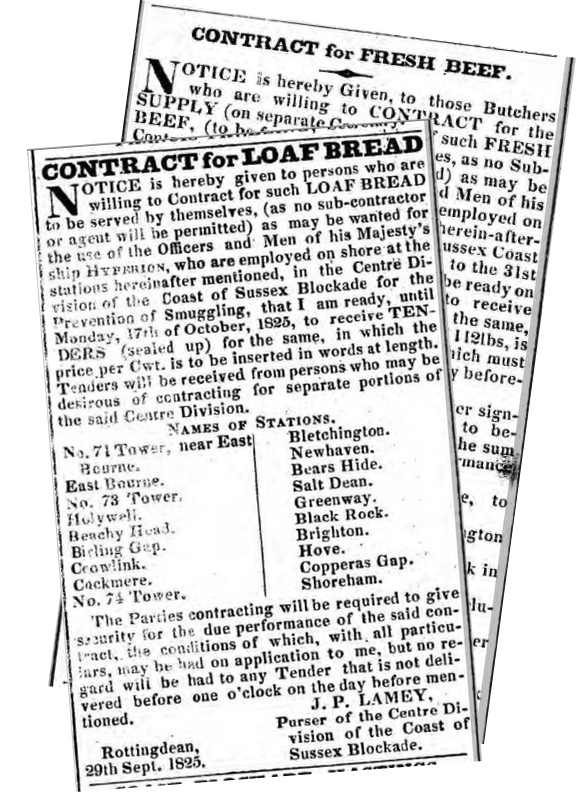
Buildings such as the Napoleonic Martello Towers along our southern coasts, barracks and forts were utilised. These were known as Coast Blockade Stations or “Watch” houses and many existing houses were also converted for this purpose or were newly built. However, none of the houses were fortified as such being intended only as lookout posts (or “watch” houses) and for housing the officer’s and rating’s own families – something of a first in providing facilities for employees! During the period of the Blockade (1817 – 1831) the areas were reorganised from time to time and some watch houses abandoned in favour of better sites.
Two surveys of Shoreham Harbour dated 1829 and 1844 (Mss.20,107 and 20,109) both show a “Preventative Service Watch House” at the same location as shown on the 1860 Ordnance Survey map. C & J Greenwood’s 1 inch to 1 mile survey published in 1825 however shows two “watch houses” (not “Block” houses – the Navy never referred to them as such) on the shingle spit west of the harbour outlet, the most westerly one roughly where the 1860 one is shown, although it is difficult to be absolutely certain on such a small scale map (1). All this is prior to 1857 and cannot be confused with the Shoreham Fort which is sited at the harbour mouth and upon which work did not begin until that year and finished in June (2).
There is little doubt therefore that if not the earliest original site, the Watch House or Coastguard Station as it later became is clearly shown on the 1860 map at a point at the sea end of where Ferry Road now is, on it’s south-western corner and where it almost certainly stood from at least 1829 in one form or another and possibly earlier.
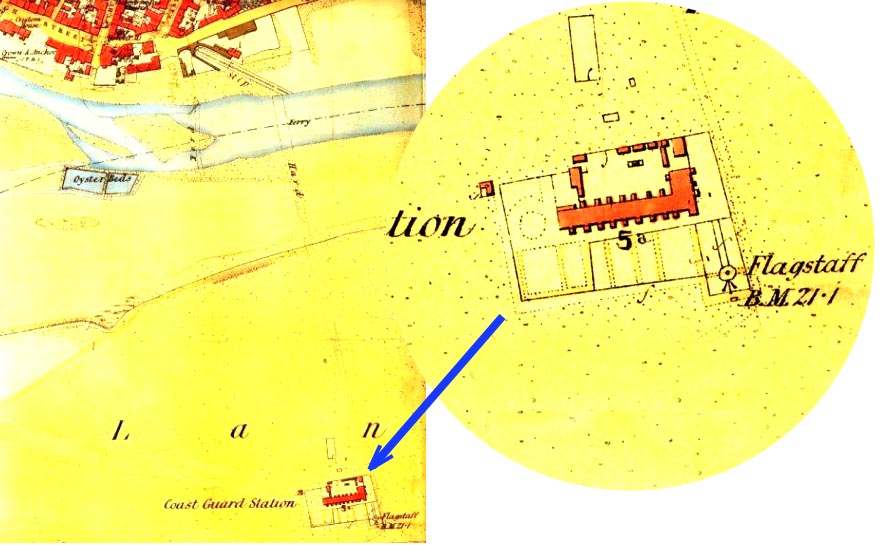
The plan of the 1860’s building gives us an idea of its’ shape, a long ‘L’ with numerous smaller extensions (look-out posts or water closets for the families?) protruding from it at regular intervals and around its grounds other outbuildings and a flagstaff.
The census returns suggest a maximum occupancy of 12 families in the Station at any one time and each family had 3 to 4 rooms. There were often up to six or more in a family and would have been a bit crowded (In 1841 Lieut. John Hills’ family totalled 12 including his two servants but as commander of the station he was probably living in the quarters at the east end that look to have been larger.)
We know what Blockade Able Seamen would have dressed like as an1825 muster shows us that the uniforms provided to them included:- three blue jackets and trousers, 6 shirts, 2 pairs of shoes, 1 duck frock, 3 pairs of stockings, 3 flannel waistcoats, 2 black hats (these were round with a flat top and brim made of leather or japanned canvas) and around their necks they wore a black kerchief.
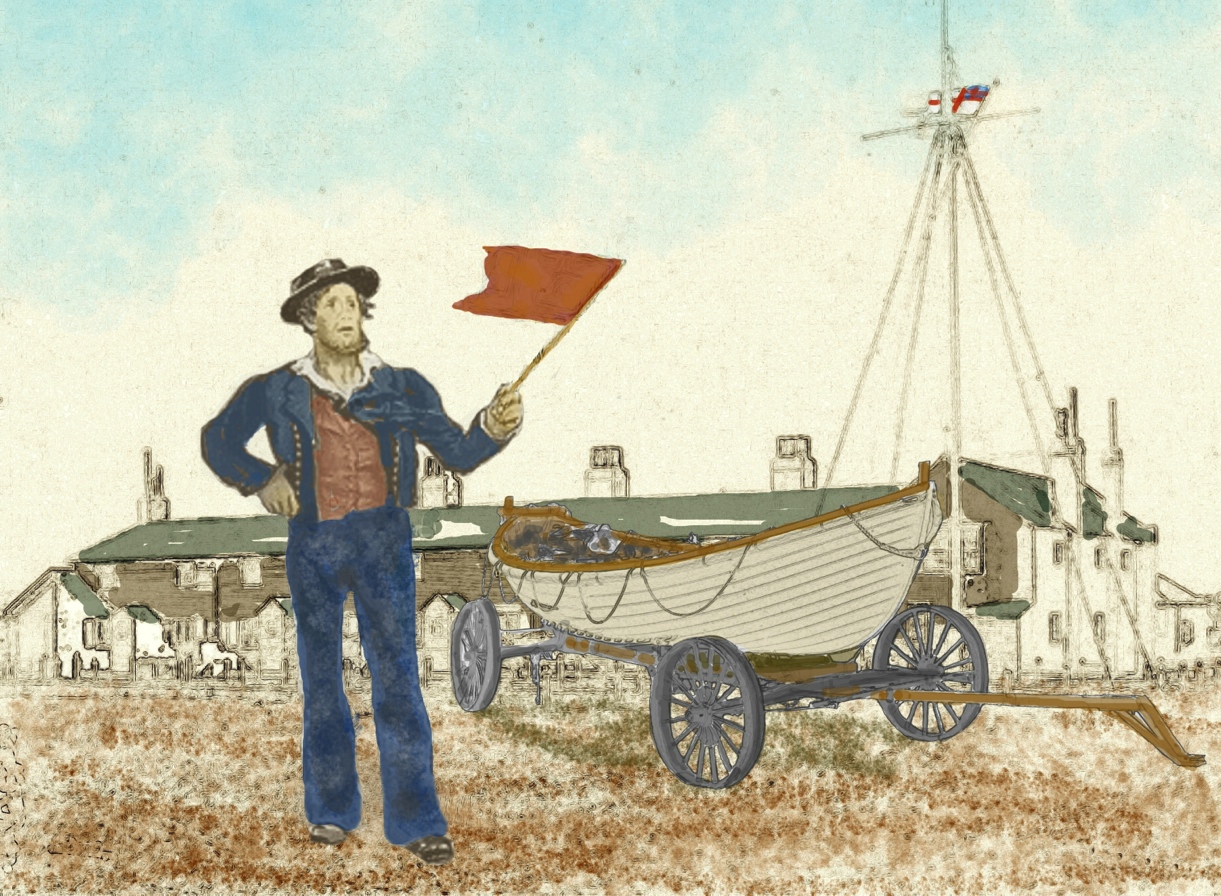
What of the individuals themselves and how were they received in the town? Run along Naval lines the discipline of its’ own men was tough enough (flogging was still a common feature of punishment) and these were, in any case, men already hardened by life at sea during the Napoleonic Wars. As a result the Service was a hard and at times ruthless force, purposely intended as such to provide a more effective method of countering the smuggling problem.
Many townsfolk though were themselves involved in the smuggling trade, if not directly then certainly by way of passive or implied support as there were few Shoreham inhabitants that did not benefit through the cheap purchase of silks, liquor, tea tobacco, etc., Hitherto, although the Customs and Revenue men had some limited success and were generally to be avoided, enough goods nevertheless got through to satisfy most people’s needs but the new Service seemed to provide a far greater threat!
Consequentially, relationships generally that had not been altogether healthy with local Customs men then became far worse with the arrival of the Blockade men particularly in the earlier years of the Service – a situation that was to cause as many problems for the Service as it was for the smugglers themselves. There are many instances throughout the country then where smugglers that had actually been caught red handed with contraband goods or captured having maimed and wounded blockade men were nevertheless set free by a completely unsympathetic legal system!
Shoreham was no exception. On the 7th December 1825 Lieutenant Henry Leworthy of the West Worthing Blockade Station had seen a cutter with a boat in tow hovering off the beach. As soon as it became dark he launched his galley and quietly laid alongside the cutter unseen by the crew until the last moment and six men and 92 tubs of spirits were taken as well as the cutter – the Mayflower of Brighton. The men were subsequently prosecuted in the Shoreham Court before magistrate John Wakefield. Five of the six were convicted and given light fines but John Wilkinson, who admitted to owning the illicit cargo and being on board the Mayflower at the time was freed because he claimed to suffer from fits!
Wilkinson, a Shoreham man well known to everyone as smuggler, was examined physically prior to the court hearing by Mr.Peins, Blockade Surgeon, and pronounced fit for naval service. In his defence Wilkinson produced nothing by way of medical evidence to show he was epileptic but did have letters from nine citizens of Shoreham. Eight of these were dismissed by the Blockade report as being “… all brothers in the trade.”- the one exception being Mrs. Anro landlady of the Royal George but, according to the report, that hostelry was “nothing more than a pot house in a nest of smugglers.” Word of Wilkinson’s release soon spread around the town and magistrate John Wakefield was cheered round the streets.
Despite these demoralising setbacks the success of the Coast Blockade whilst limited, did have some effect on smuggling added to which local magistrates eventually adopted a more sympathetic response resulting an increased number of successful convictions of captured smugglers.
Another incident that same year was when a group of smugglers were confronted carrying contraband goods near Salts Farm and one of their number, a man named Stent, was shot by the Blockade men. He was taken to his home in Old Shoreham where the ball was extracted but was not expected to survive.
In August of 1826 Lieutenant Hale of the Shoreham Blockade Service arrested local men Daniel Maple and John Lynn for assisting in the smuggling of 24 gallons of brandy and 12 gallons of gin at Copperas Gap, Portslade.
One night in December 1829 a large cutter from Flushing moored off Shoreham at night and sent ashore 600 tubs of spirits, packets of tea and tobacco in a tub boat guarded by 16 men with 30 muskets having the intention of carrying them up river to Old Shoreham Bridge under cover of darkness. Unfortunately for them their boat ran on to the wicker-work and piles at the Dolphin Hard (now Coronation Green) and took on much water. The crew, mostly Dutchmen, fearing they were sinking gave the alarm that alerted the nearby Blockade men who arrested them all and retrieved the contraband goods.
In January of 1830 a galley with 350 tubs of spirits, 64 casks of tea and several bales of tobacco was seized near Shoreham by Lieut. Wooolver of the Coast Blockade and in September the same year 120 packages of tea, tobacco and spirits were captured near Lancing by Blockade men under the command of Lieuts. Webb and Phillips of the Lancing and Shoreham districts.
The number of land stations in the Sussex Blockade Service during 1830 were West Division 15, Centre 21 and East 31. Shoreham West’s complement was 2 officers, 3 petty officers and 20 men so that even though not all of them may have had wives and families the Watch House must have been quite crowded. Shoreham West was the first station in the Western Division that stretched to Chichester – the so called Shoreham East at Copperas Gap was in the Centre Division. Neither Shoreham stations appear to have had semaphore signal capabilities although Hurd’s 1812 Admiralty Chart shows that there was one up on Slonk Hill behind the town (see 6b in Historic Maps of Shoreham on shorehambysea.com web site).
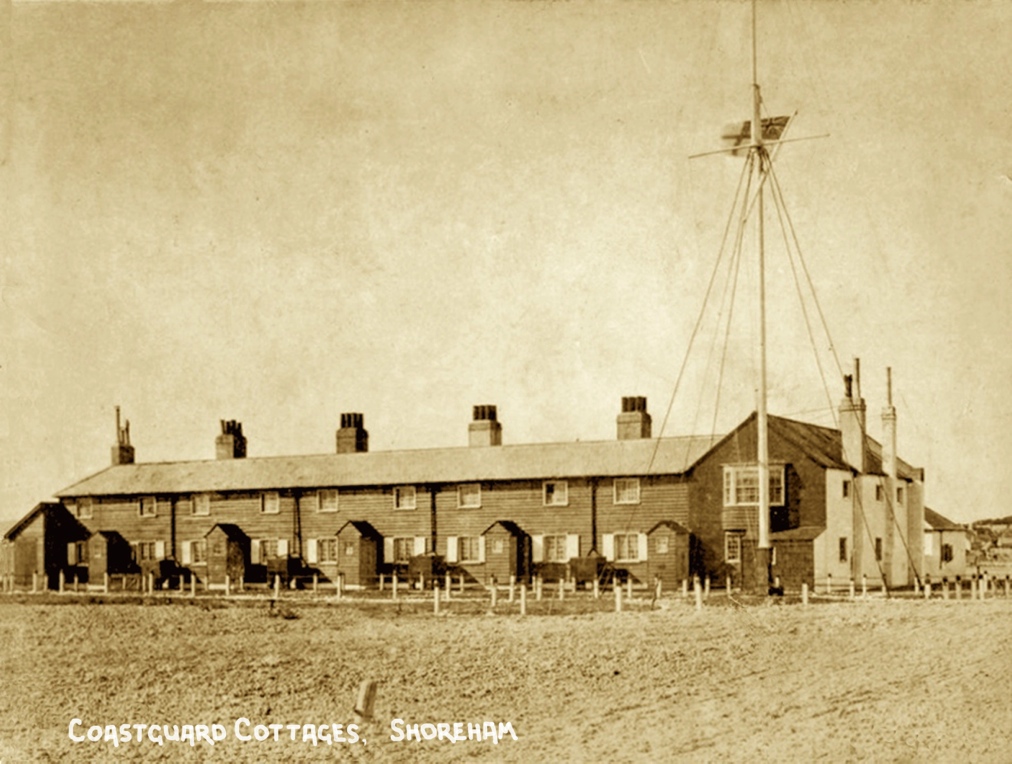
The Blockade Service’s days were numbered however as it had been an expensive campaign and was now under scrutiny following the Duke of Wellington’s replacement as Prime Minister by Lord Grey and a new First Lord in the Admiralty – by 1831 it was disbanded. As a campaign, like the Customs before it, the Blockade only achieved a limited measure of success although no armed force in the country at that time could have actually stopped huge flow of illicit contraband. Essentially, it was a war of attrition where armed service discipline and determination gradually turned the pattern of smuggling away from armed gangs fighting on the shores to concealment on vessels.
The Coastguard Service had already been in existence for a few years by then and was also involved in anti smuggling duties (under the control of the Board of Customs). Men from the disbanded Blockade Service were either stood down (with pensions if they were lucky) or transferred to the Coastguards and many of the watch houses such as Shoreham were taken over. Official references to the Blockade Service ceased in favour of the Coastguard during 1831 and the Watch House became the Station House.
Whilst the Coastguards named in1841 and 1851 censuses are mostly past active service age they nevertheless indicate a likelihood that they were once serving in Shoreham and perhaps even as Blockade men before they were transferred to the Coastguard Service.
Shoreham Coastguards carried on the preventative duties and in July 1832 officers captured the 60 ton Portsmouth ketch ‘New Speedwell’ and it’s lighter at Shoreham. The intention had been to smuggle in £3,000’s worth of raw tobacco but the goods and the 5-strong crew were arrested.
In February 1835 forty-eight ankers (about 10 gallons per anker) of spirits were taken from a boat by the coastguards in Shoreham harbour together with one of the crew members, a man from Steyning, who had become stuck in the river mud.
Not all the situations had satisfactory outcomes. In August of 1836 the officer in charge of the Shoreham coastguard station was ordered to take over at Kingston (near Ferring). Using a galley oared by three Shoreham Coastguard men to transport his luggage a squall suddenly developed near Goring, capsized the boat and drowned the crew – Tyrell, Barrett and Boyden – only the officer made it ashore.
Concealed smuggling continued in a big way for a few years but a most effective deterrent virtually eradicated large scale smuggling in 1841 when Prime Minister Robert Peel amended the country’s duty tariffs. Many duties of customs and excise were reduced and compensated by the reintroduction of income tax so that for the smuggler there was no longer any profit to support a commercial venture.
Despite that there was a brief spell when smuggling re-emerged and in June of 1849 the smack ‘Roberts,’ her crew and 46 tubs of spirits were seized by the Shoreham Coastguard. The following October the captain and crew of the Colchester smack ‘John & Mary’ came into Shoreham harbour with a catch of oysters. Vigilant coastguards though discovered 73 tubs of brandy hidden under the shellfish.
Although their prime purpose had been to combat smuggling Shoreham Blockade men were also on hand to assist where possible in lifesaving situations. One of the earliest we know of was in October of 1825 when the ship ‘Laurel’ sank near the harbour entrance. Officers and men of the blockade service saved the crew and managed to refloat the vessel into the harbour on the next tide.
Some while after they took over the stations Coastguards were moving towards more of a life-saving role themselves and many of the watch houses had long been provisioned with mortars for firing lines on to ships in distress as well as other life saving equipment. Subsequently they became responsible for saving many lives as well as promptly reporting floundering vessels in order to muster aid. In September 1839 several packages of ‘Dennett’s Rockets’ and the associated apparatus for rescues from shipwrecks were delivered to the Shoreham station and the site of the cabinet containing the rockets appear on one of the older maps of the Beach near to the station building.
These rockets are specifically mentioned again in a report of August 1853 when the barque ‘Australia’ came ashore near Shoreham during a heavy gale. Officers from the Shoreham, Brighton and Fishersgate stations succeeded in shooting a line to the vessel which the crew were able to use to drop to the waiting lifeboat.
To the north-east of the station there was also an exercise post as well as a rifle range with targets and butts used by the coastguards and may well have been used by the blockade men previously.
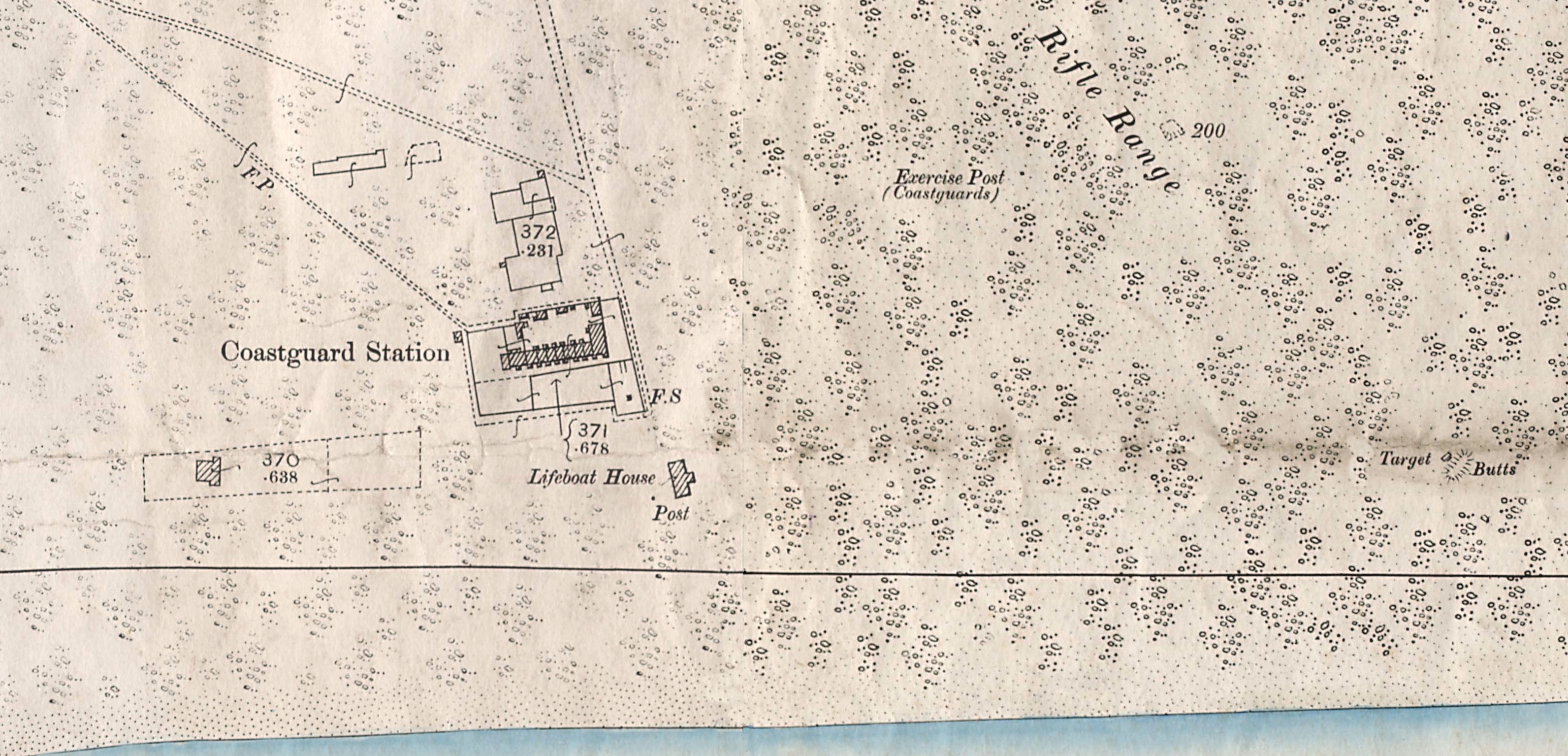
Lifesaving initially though was largely carried out by the pilots at Kingston who used a lifeboat provided by the harbour commissioners and these duties were later taken over by the RNLI who had their earlier boathouse there. On-going problems with the harbour bar and silting up of the harbour mouth though made prompt responses for help difficult if not impossible at times. Things came to a head in 1891when the lifeboat crew were heavily censured for not attempting to get their boat up the canal and across the spit to a wrecked ship on the sea front at Portslade after the harbour mouth became impassable.
As a result it was decided to relocate the lifeboat house to the Beach near the coastguard station and was at first sited a few score yards nearer the sea than the station. There was a foundation stone-laying ceremony in December of 1892 that seems to suggest something of a substantially constructed building but as it turned out the site was not ideal and perhaps too close to the sea (it was only a few yards from the high water line so must have been susceptible to wave damage during storms) as a few years later it was re-sited alongside the coastguard station. A rare photo of the second boathouse shows it now to be of wooden construction.
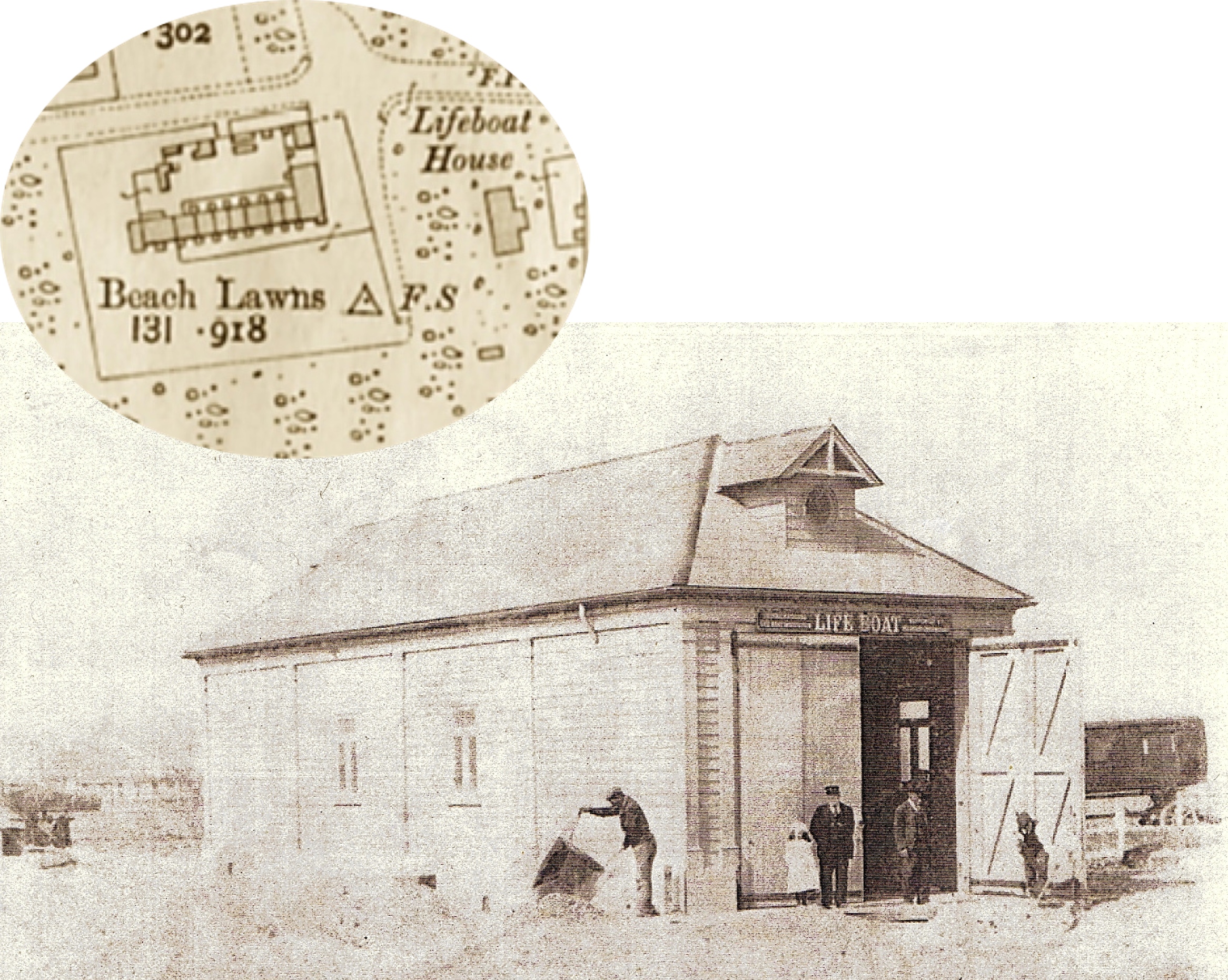
The lifeboat was the ‘William Restell’ under the command of Hiram Maynard who was involved in many successful lifesaving situations of the time. Of all their successes one of particular note occurred in 1895 when the RNLI presented an award to the entire crew of the Shoreham lifeboat for their rescue of nine men from the distressed barquentine ‘Atlantic.’
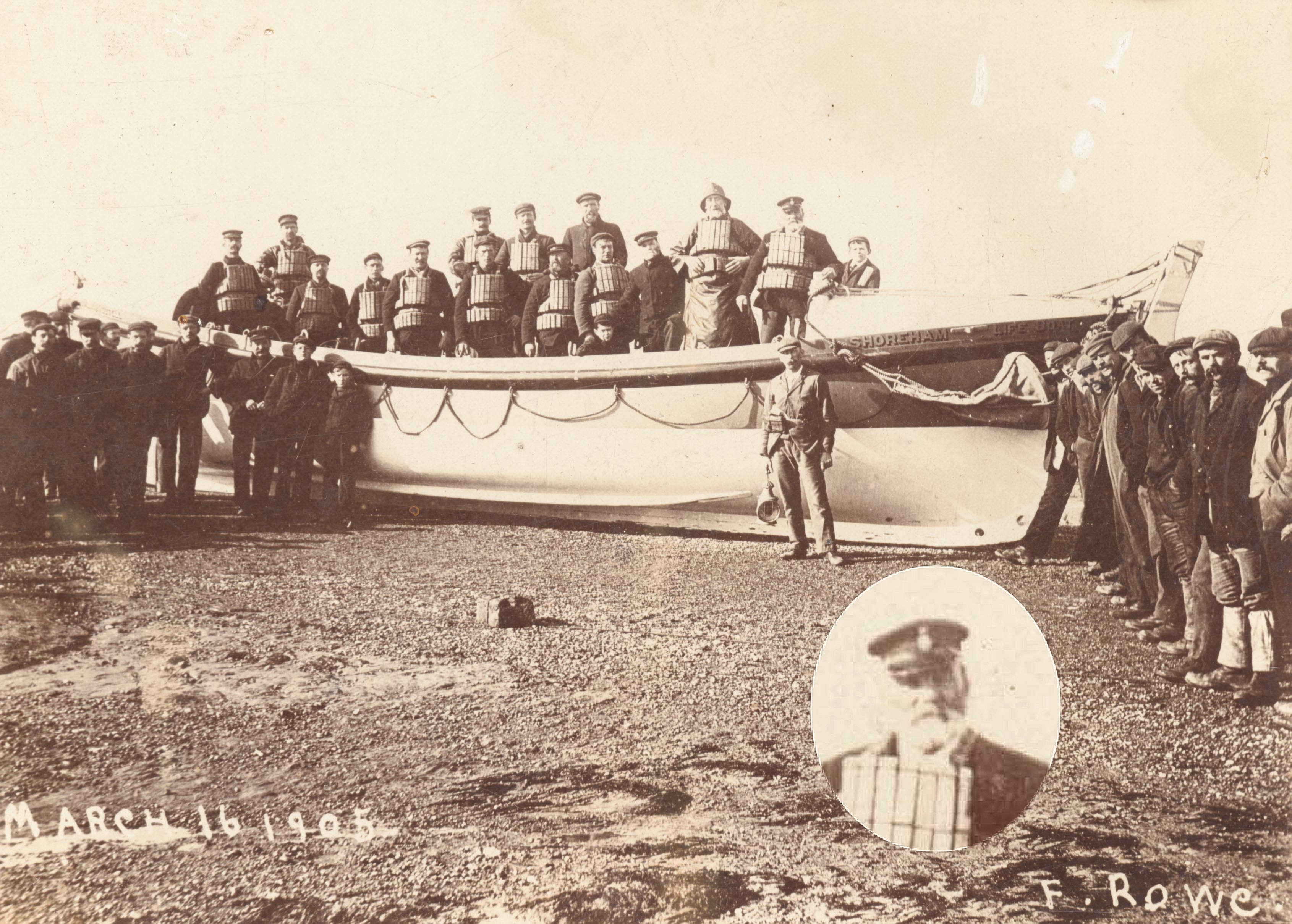
One slightly uncomfortable moment occurred in November 1893 when the lifeboat was called out during a particularly low tide. Launches then required the use of a carriage drawn by a team of horses to get the lifeboat to the water but this grounded on the sand as soon as it left the carriage and the horses refused to go further into the deeper water until Albert Peacock, an employee of Messers Eade and Son of Shoreham waded through the water and led the horses.
By the early 1900’s the coastguards were relocated to Kingston and from there to purpose built cottages at Southwick. The lifeboat was eventually returned to Kingston during the 1920’s after the harbour bar problem was overcome. The coastguard station on the beach survived a few years more as private residences under the name ‘Beach Lawns’ but was eventually demolished during the 1920’s and replaced by bungalows.
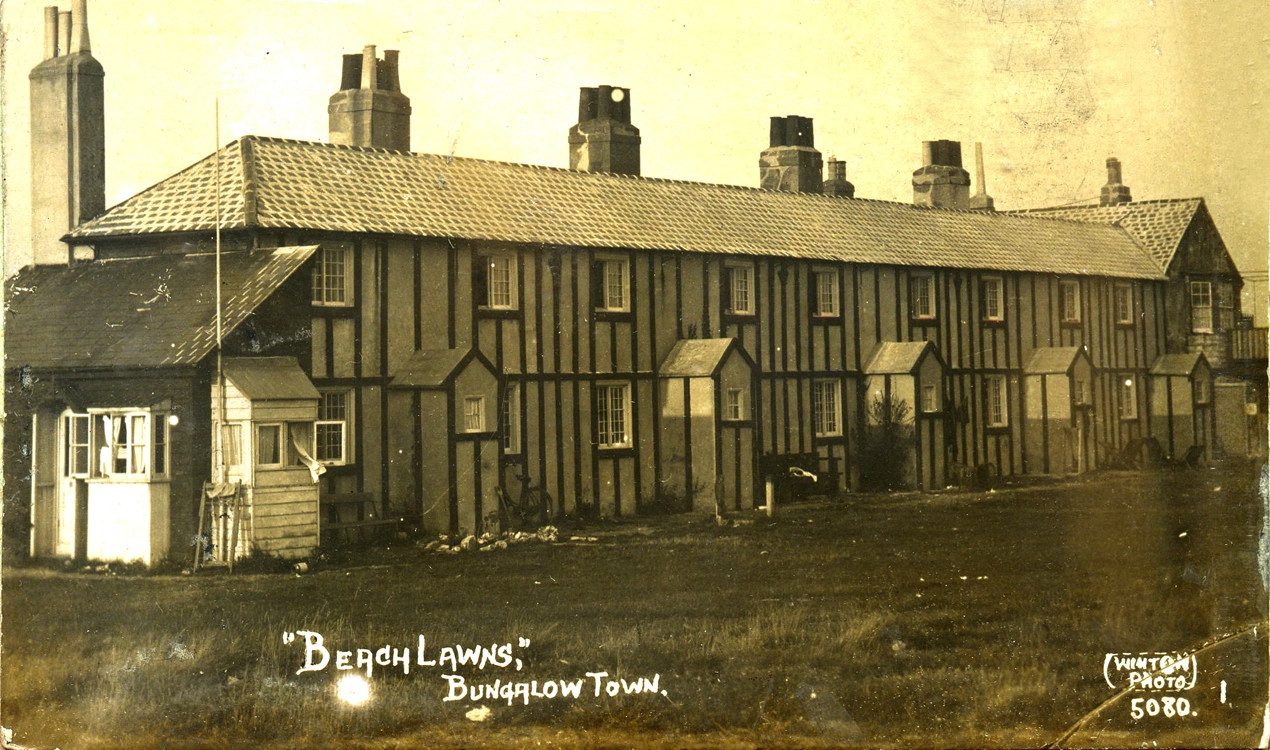
Named Blockade & Coastguard Men.
The New Shoreham Parish Records, Censuses and Newspaper Reports provide the names of many Blockade and Coastguard men:-
Parish Records and Newspaper Reports
George Shirley, Preventative Service 1823
Lieutenant Hale 1826
William Hyatt of Lancing Blockade Service 1828
Charles Entisell, Blockade Service 1829
Thomas Dipper, Blockade man 1830
Matthew Hodge, Blockade Service of Shoreham Watch House 1831
Richard Rowland Turner, Coastguard of Shoreham Watch House 1831 & 1833
William Barrett, Coastguard of Coastguard Station House 1834 &1836
Coastguards Barrett,Tyrell and Boyden were drowned in the 1836 incident
James Clark, Coastguard of the Stationhouse on the beach 1836
George Canning of the Station House 1837
1841 Census for Coast Guard Station, Shoreham
Richard Woolven 48 Lieutenant R.N. & Chief Officer
John Bennett 24 Coast Guard
Peter Juniper 47 Coast Guard
Richard Gill 50 Coast Guard
Thomas Watty, 30 Coast Guard
William Taylor 36 Coast guard
George Gibbs 35 Coast Guard
Richard Pont 30 Coast Guard
George Canning 30 Coast Guard
Joseph Dacoster 31 Coast Guard
Michael Stone 30 Coast Guard
James Hancock 25 Coast Guard
– 12 officers and their families totaling 52 residents in all.
1851 Census for East Coast Guard Station, Shoreham (now known as the East Station that covered the area from the Beach to Copperas Gap, Portslade)
No. 1 Herbert Ryves 40 Lieutenant, R.N. Dorset. In November 1852 Lt. Ryves was transferred from Shoreham to Newhaven station and replaced at Shoreham by Lt. David Elliott from St. Catherine’s station. Elliott in turn was transferred from Shoreham to Carrickfergus in September 1853 and Chief Officer Fenton Wake was appointed to command the Station.
No. 2 Robert Barge 40 Chief Boatman Coastguard Service born Winterbourne, Devon (Dorset)
No. 3 George Greene 48 Coast Guard Comm——d? Boatman, Portsmouth
No. 4 Michael Stone 41 Coast Guard St Ruan, Cornwall
No. 5 Thomas Harmer 34 Commissioned(?) Boatman,, Coast guard Service, Dover Kent
No. 6 Francis Bastian 38 Coast Guard Falmouth, Cornwall
No. 7 Joseph Bass 49 Coast Guard, Stepney, Middlesex
No. 10 Valentine Settle (?) 30 Coast Guard, Deal, Kent
No. 11 James Dumble 35 Coast Guard, Devonport, Devon
No. 8 John Bartlett 33 Coast Guard, Isle of Wight, Hampshire
No. 9 cottage Richard Hill 37 Coast Guard born Revelstoke, Devon
– 11 officers and their families totaling 47 residents in all.
The same 1851 census also reveals more officers living in the town:-
Thomas White born at Cowes on the Isle of Wight living in Ship Street, 45years old, Superannuated Coast Guard 1841 and again in 1851
William Newell born at Selsey living in St.John Street, 67 years old, Superannuated Coastguard 1851
Richard Gill born at Mevagissy, Cornwall living in East Street, 61 years old, Superannuated Coastguard 1851
Thomas Butler, a Shoreham man by birth living in the High Street, 53 years old, Superannuated Coastguard Boatman 1851
Newspaper announcements also reveal the following officers and changes:-
December 1855 Henry R. Edlin of Shoreham, an officer of the Coastguards was named as an insolvent petitioner.
July 1856 Mr. G.T.S. Winthrop was appointed to command Shoreham Station where the vice Mr. Edlin had previously been removed.
May 1857 John Hellock, Master, R.N., was appointed to command Shoreham station, vice Lt. Winthrop. John Kellock (or Hellock?) Master, R.N., was transferred from Shoreham to Blatchington in October 1859
Parish records also mention Jonathan Dale, Coastguard 1857
1861 Census for East Coast Guard Station, Shoreham
No. 1 Matthew Casey 52 Officer in Charge of Station, born Ireland
No. 2 James Harries 46 Coast Guard Brawdy, Pembrokeshir
No. 3 James Donnelly 34 Coast Guard Killew, Yorkshire
No. 4 John Bartlett 44 Coast Guard St. Helens, Isle of Wight
No. 5 John H. Baker 39 Coast Guard St. Margarets, Kent
No. 6 Francis Bastian 48 Coast Guard Falmouth, Cornwall
– six officers and their families, 29 persons in all
Parish records also mention:-
Thomas Billett, Coastguard 1862
William Rocketts, Coastguard 1863
Edward Cord, Coastguard 1866
William Slaven, Coastguard 1869 (lived at Lancing and perhaps stationed there)
James Brunnen, Coastguard 1870
1871 Census for East Coast Guard Station, Shoreham
Parker Jones 30 Coast Guard R.N., born Portsmouth
Henry Hicks 30 Coast Guard R.N., Portsmouth
William Hines 34 Coast Guard R.N., Elson, Hampshire
Thomas Fuller 32 Coast Guard R.N., Lewes, Sussex
William Langrish 37 Coast Guard R.N., Elmer, Sussex
Henry Popham 37 Coast Guard R.N., Yealm (?)
William Willey 50 Coast Guard R.N., Mullion, Cornwall
William Benson 36 Coast Guard R.N., London
Patrick Cassidy 31 Coast Guard R.N., Ireland
Thomas Jones 41 Coast Guard R.N., Chalaborough, Devon
William Bussell 46 Chief Officer Coast Guard, Weymouth
– 11 officers and their families, 52 persons in all
Parish records also mention:-
Rodney P.Jones, Coastguard 1871, Joseph Henry Hicks, Coastguard 1873 are both recorded as living in Lancing and if they are not the same as the similarly named men above could perhaps have been stationed in Lancing and not Shoreham.
John Stephens, Coastguard 1880 (another Lancing resident)
1881 Census for East Coast Guard Station, Shoreham
George Green 50 Coast Guard, born North Sea, West Indies
Thomas Francis 41 Coast Guard, Oxford
John Stevens 34 Coast Guard, Cornwall
John P. Payne 37 Co..d(?) Boatman, Coast Guard (where born undecipherable)
Alexander Boyd 36 Coast Guard (where born undecipherable)
– 5 officers and their families, 24 persons in all – but is a second page of census missing?
1891 Census for Coast Guard Station, Shoreham
Cornelius Murphy 46 Chief Boatman Sea RN, born Marylebone, London
John Ahern 48 HMS Boatman, Hythe Hants
George B Gough 32 Coast Guard Sea RN, Ivor, Bucks
Neil McDougall 38 Coastguard Sea RN, Glasgow, Lanarkshire
David McNally 28 Coast Guard Boatman, Newcastle upon Tyne
William Dailey 32 Coast Guard Boatman RN, Devonport, Devon
James Chalmers 28 Boatman HMS Coast Guard Sea RN, Scotland
Thomas S. Lane 30 Coast Guard HMS Sea RN, Bristol, Gloucestershire
– 8 officers and their families, 34 persons in all
1901 Census forCoast Guard Station
Charles Jerrard 48 Chief Boatman Coast Guard, Chideock, Dorset
James Barton 35 Coast Guard, Com(?) Boatman, Portsmouth, Hants
Henry Standen 38 Coast Guard Boatman, born Maidstone, Kent
William G. Campbell 32 Coast Guard Boatman, Croydon, Surrey
James McGregor 52 Chief Officer, Coast Guard, Inverness, Scotland
William Ransom 37 Coast Guard Com(?) Boatman, Ireland
Joseph Wilde 35 Coast Guard Boatman, Stepney, London
William Clark 29 Coast Guard Boatman, born Brentwood Essex
– 8 officers and their families, 47 persons in all
The census returns suggest a maximum occupancy of 12 families in the Station at any one time and each family had 3 to 4 rooms.
By 1911 occupants were non-coastguard.
Roger Bateman
Shoreham
April 2003
(revised March 2010 and September 2014)
Sources:- generally, from ‘The Coast Blockade 1817 – 1831’ by Roy Philp. Compton Press;
(1)West Sussex Record Office;
(2) John Goodwin’s “The Military Defence of West Sussex” (Middleton Press 1985)
The British Newspaper Archive.
New and Old Shoreham Parish Records,
Census Returns
All photos from the Shorehambysea.com collections except where stated
NB This has been written without any reference to the records at Kew that may provide further information.



1. I am researching a sword presented to Chief Officer W. Pearce of the Coastguard for his gallantry in boarding and removing explosives from the burning ketch Invicta on 1 October 1901. At that date he was a Chief Boatman in Command living in Coastguard Cottages with his wife and four children. I should value permission to reproduce the illustration of these in the document I am generating for the Shoreham Port Archives, the West Sussex Record Office, Chichester, and me. Such permission would, of course, be duly acknowledged.
2. On completion, would you also like an electronic version of this research?
3. I believe that Pearce and his family should appear in your list of occupants of these cottages in the 1901 census.
Many thanks for this fascinating article; keep up the good work.
That’s fine John – an acknowledgement would be appreciated please as it helps promote our website – and, yes thank you, a copy would be much appreciated for inclusion with our articles.
This is a fantastic resource! My sister and i have been searching for the death of William Barrett for years! He is/was our Great x2 grand uncle! Ti find him listed above was an amazing find – and to learn about the 1836 incident – amazing. Thank you!!
We found his death and the births of the sons at Shoreham in the Shoreham parish records – But would can you confirm the name of the church, I wonder?
Also – are the Coastguard house still standing? We plan a visit?
I do hope I have got this sorted – and will have a reply!!
Judith Sexton